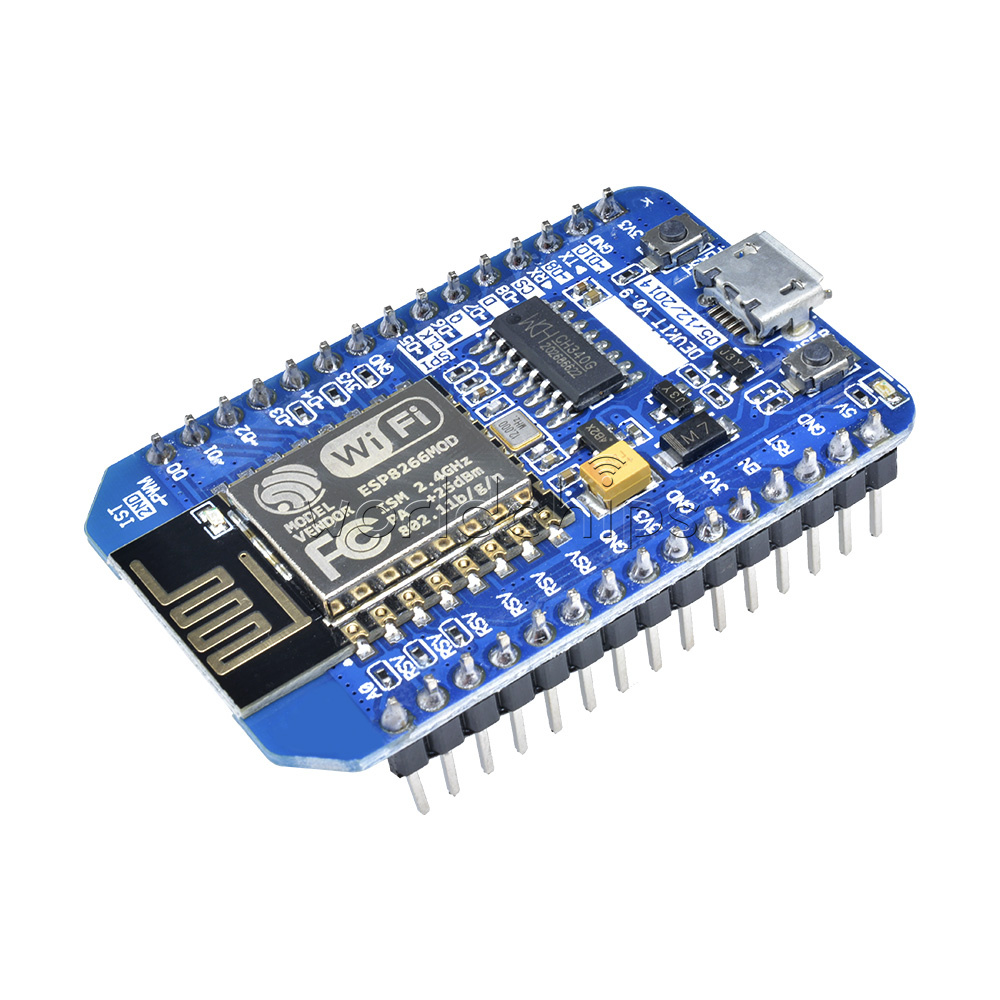

To add a voltage regulator (needed on the original Espruino board), we'd suggest you wire up an LD1117AV33 as follows:

However some versions use 115200 baud - see below. The board communicates at 9600 8 baud, 1 stop bit, no parity. As the board has its own voltage regulator, you'll need to run it off of 5V, not 3.3V. If you're using the Adafruit HUZZAH board, you'll only need power, GND, and RX/TX for it to work. If you're not using the ESP8266 shim, you will almost certainly need to add at least a 10uF capacitor between GND and the ESP8266's 3.3v line to get it to work reliably. You'll need an extra 3.3v regulator when using this on an original Espruino board as it can't supply enough power. Shim Version 2īoot mode - must be 3.3v to enable WiFi, 0v for bootloader more.ĬHip Power Down, 3.3v to enable WiFi, 0v for off. If you have the v1 shim and your Pico has pins pre-installed, you will need to cut the black plastic away from the last 3 pins in order to fit the shim. Please see the videos below for more information on wiring the shims up: Shim Version 1 A 47uF, 6.3v 1210 MLCC capacitor like this one is perfect.
Esp8266 firmware version update#
After that, you can update the firmware over the air using the OTA. To upload ESP8266 firmware you need FT232RL FTDI USB to TTL Serial+Adapter. The following are daily builds of the ESP8266 firmware for boards with at least 2MiB. The problem is if we do not need correct ESP8266 firmware, because responses to AT commands are different in different firmware versions. We use ESP8266 together with Arduino and ESP8266EasyIoT library.

Esp8266 firmware version how to#
It's often a good idea to fit the capacitor if you're planning on powering anything else from the Pico's 3.3v rail. In this tutorial we will show how to update ESP8266 with new firmware. There are pads for an optional 3.3v regulator (not needed) and a 1206 or 1210-style capacitor. The Shim available for the Espruino Pico helps to adapt the ESP8266 to fit onto the Pico, while still keeping all of the IOs intact. Support is provided in Espruino by the ESP8266WiFi ( About Modules) and ESP8266WiFi_0v25 ( About Modules) modules.ĭifferent versions of the ESP8266 firmware communicate at different baud rates and have subtly different commands - make sure you use the ESP8266 module that corresponds to the ESP8266 firmware version that you have.
Esp8266 firmware version plus#
It has an ESP8266, plus a separate processor for Espruino with loads of RAM and CPU power. If you want to run theĮspruino Firmware directly on an ESP8266 board, see this page insteadĭo you want a board that already has WiFi? Check out Espruino WiFi. Note: This page contains information on using an ESP8266 module with an Espruino board.


 0 kommentar(er)
0 kommentar(er)
